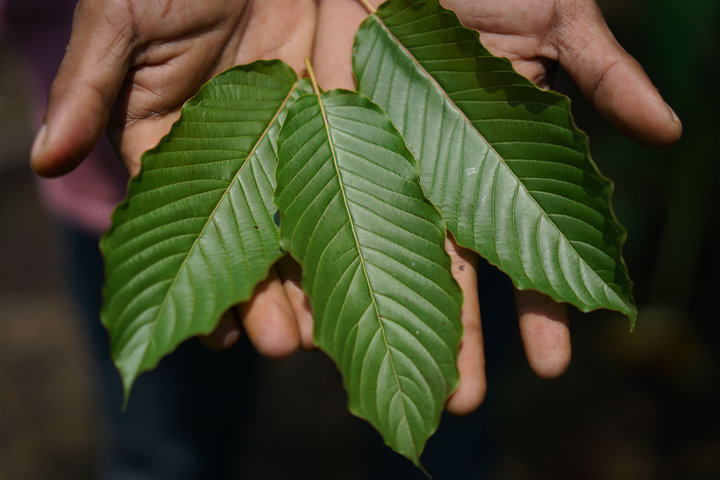
Disclaimer: Preclinical studies on compounds’ effects on test animals do not always demonstrate exactly how compounds will affect humans
A new study in rats examined the respiratory effects of mitragyinine (MG), considered the main compound in most kratom leaves consumed by users, and 7-hydroxymitragyinine (7-HMG) that occurs in very trace amounts in dried kratom leaf and as a metabolite of mitragynine.
The studies come in light of the recent development of synthetic products that contain unnaturally large amounts of 7-HMG, and are sold as “kratom”. Before a few years ago, 7-HMG products were never consumed by humans, while people have been consuming kratom for at least hundreds of years.
Researchers investigated the impact of these compounds on respiratory function in rats, comparing their effects to morphine, a conventional opioid known for inducing respiratory depression. The study revealed that 7-HMG significantly suppresses breathing, similar to morphine, while MG unexpectedly increases respiratory frequency. Naloxone, an opioid antagonist commonly used to reverse overdoses, effectively counteracted the respiratory depressant effects of 7-HMG but had no impact on MG-induced stimulation.
The presence of high levels of 7-HMG in some kratom products raises concerns about their opioid-like effects and the potential for respiratory complications. Meanwhile, MG—the most abundant kratom alkaloid—appears to have a safer respiratory profile.
The Need for Clarity
Studies like this highlight the fact that many products that come from kratom, and sold as kratom, are not the same as the leaf that’s been traditionally and relatively safely consumed in Southeast Asia for hundreds of years.
Concentrated liquid kratom alkaloid extract products have also been sold as “kratom” over the counter for years, next to concentrated caffeine shots like 5-Hour Energy. It’s likely that thousands of people purchased concentrated alkaloid extracts without being educated on the risks of dependency or combining alkaloid products with medications or recreational substances. These extract products appear to have a higher risk profile than traditional plain leaf kratom.
Scientists have been sounding the alarm for years, while media reports and public officials have too often refused to differentiate plain leaf kratom from highly concentrated extracts or synthetic 7-HMG products. In January 2024, a letter by kratom experts published in the journal Addiction urged readers to make that distinction:
History has shown us that developing enriched natural-product elixirs or purified active agents, as with cocaine from the coca shrub and morphine from the opium poppy, can be both a blessing and a curse: a blessing in that some of these concentrates can be medically useful to improve quality of life for patients suffering from a variety of disorders and a curse of increased risk. Concentrated kratom extracts are analogous to these previous historical examples. They may provide benefit to some, but they may result in unpredictable adverse effects and other potential harms resulting from dependence and drug–drug interactions.
At the Fourth International Kratom Symposium in February 2025, Dr. Paula Brown, member of the Scientific Association for Botanical Education and Research (SABER) called for clarity in the marketplace, particularly on the difference between 7-HMG and leaf kratom. “Synthetic 7-OH is not kratom—it is a highly potent, unregulated chemical,” she said.
Dr. Brown told SupplySide Supplement Journal that “We just need to be really clear that when we’re talking about kratom, we’re talking about the biomass…Kratom is the dietary supplement. That’s the plant.”
